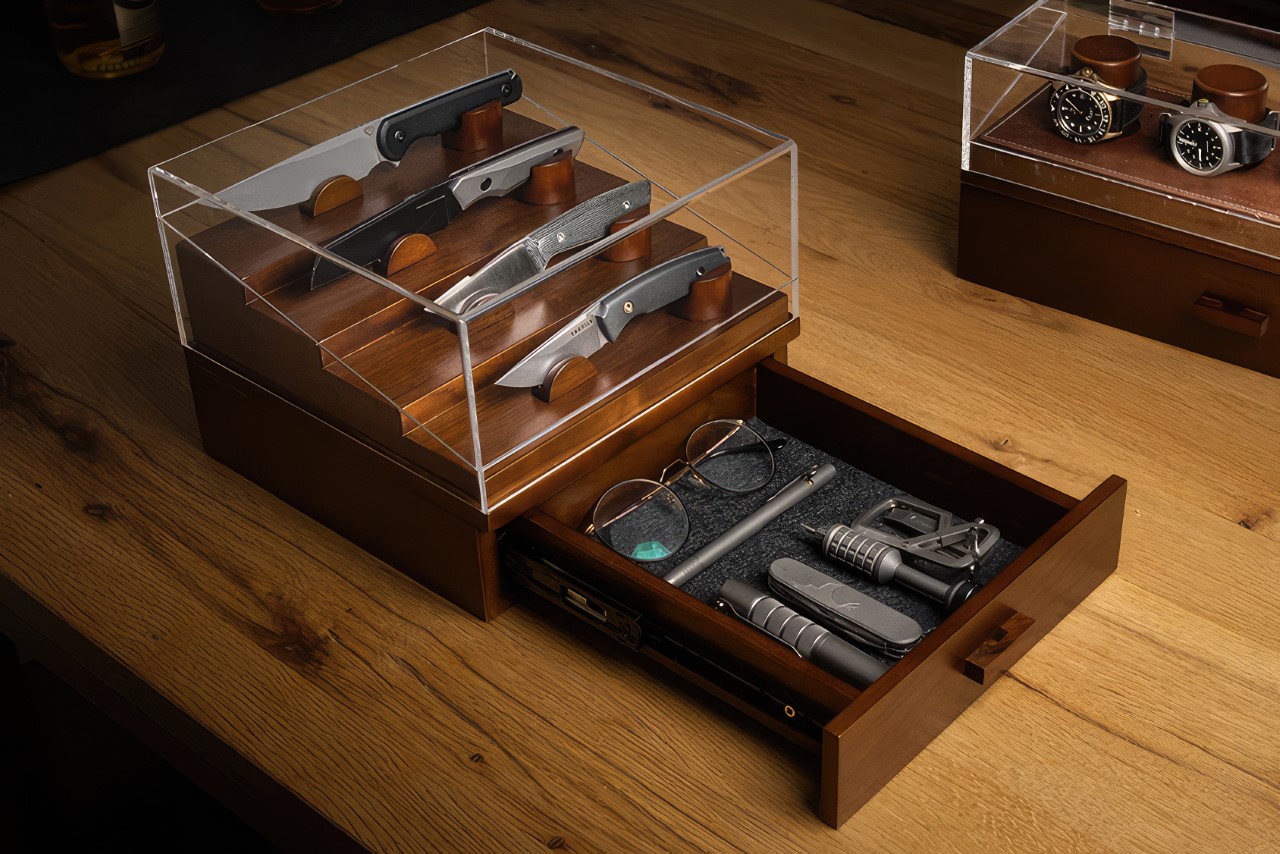
EDC Display Case by Holme & Hadfield
Great gear deserves a great home… and simply stashing your state-of-the-art EDC collection in a dopp bag or in a drawer in your shed is honestly a little shameful if you ask me. A great display case allows you to store, and more importantly, flaunt your EDC to your guests like the trophies they are. Whether it’s knives, multitools, pens, money clips, or anything else you’ve got on hand, a good EDC display case is just about as much of an investment as your EDC itself.
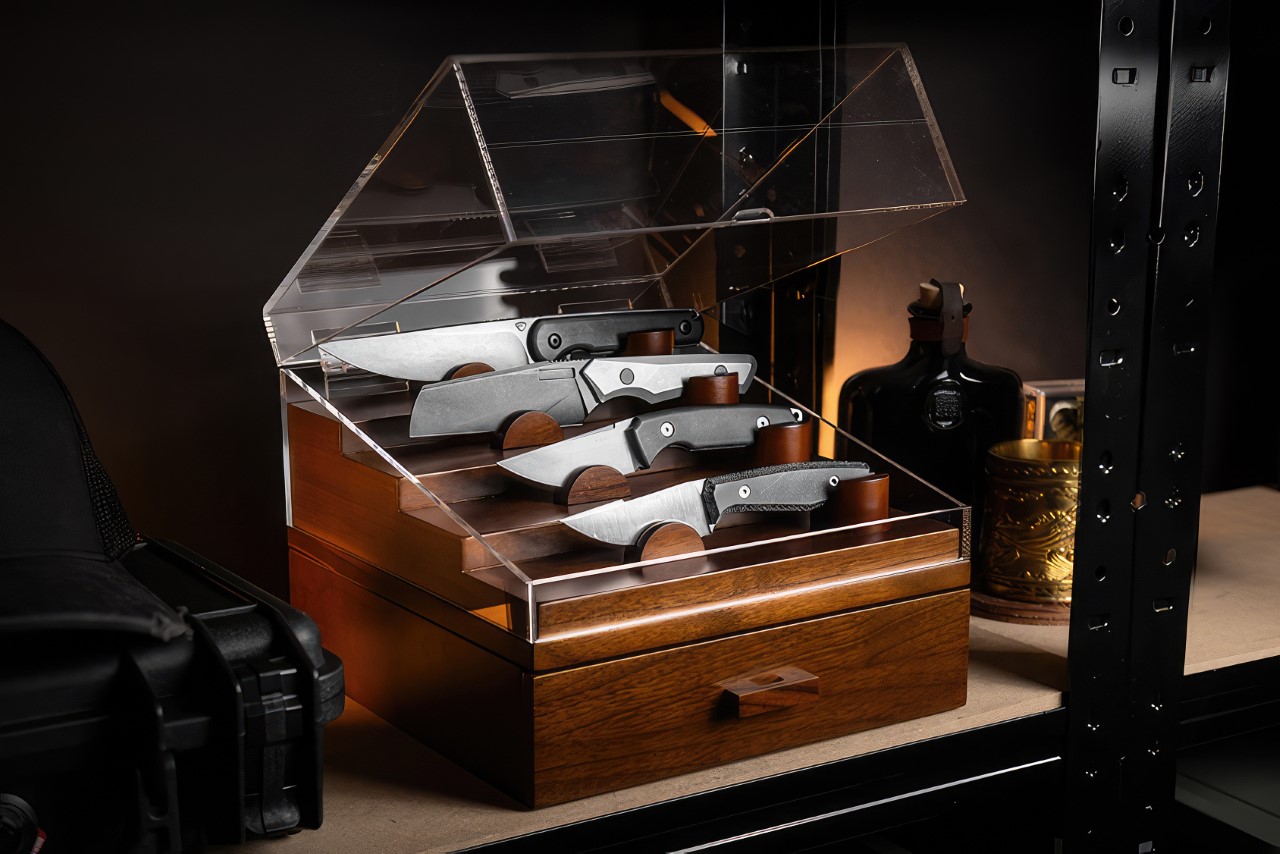
Why do I need a Display Case?
We’re at a point where EDC from companies like Gerber, CIVIVI, Tekto, CRKT, and The James Brand are less utility-focused tools and more of visual specimens of artistry and craftsmanship that ‘get the job done’. With the use of fine materials like Damascus Steel, Stone-washed Titanium, Micarta, and even sometimes top-grain wood, these knives, tools, and gear look like works of art, which is why a display case makes sense. The display case not only allows you to admire them when not in use, but it also lets you access them when you need to, whether it’s to show off to a fellow collector/enthusiast or get some tool action.
Moreover, a display case adds to the beauty of your EDC collection. It organizes your tools but also gives you a cohesive unit on your desk that looks great and enhances the overall value of your tabletop as well as your gear.
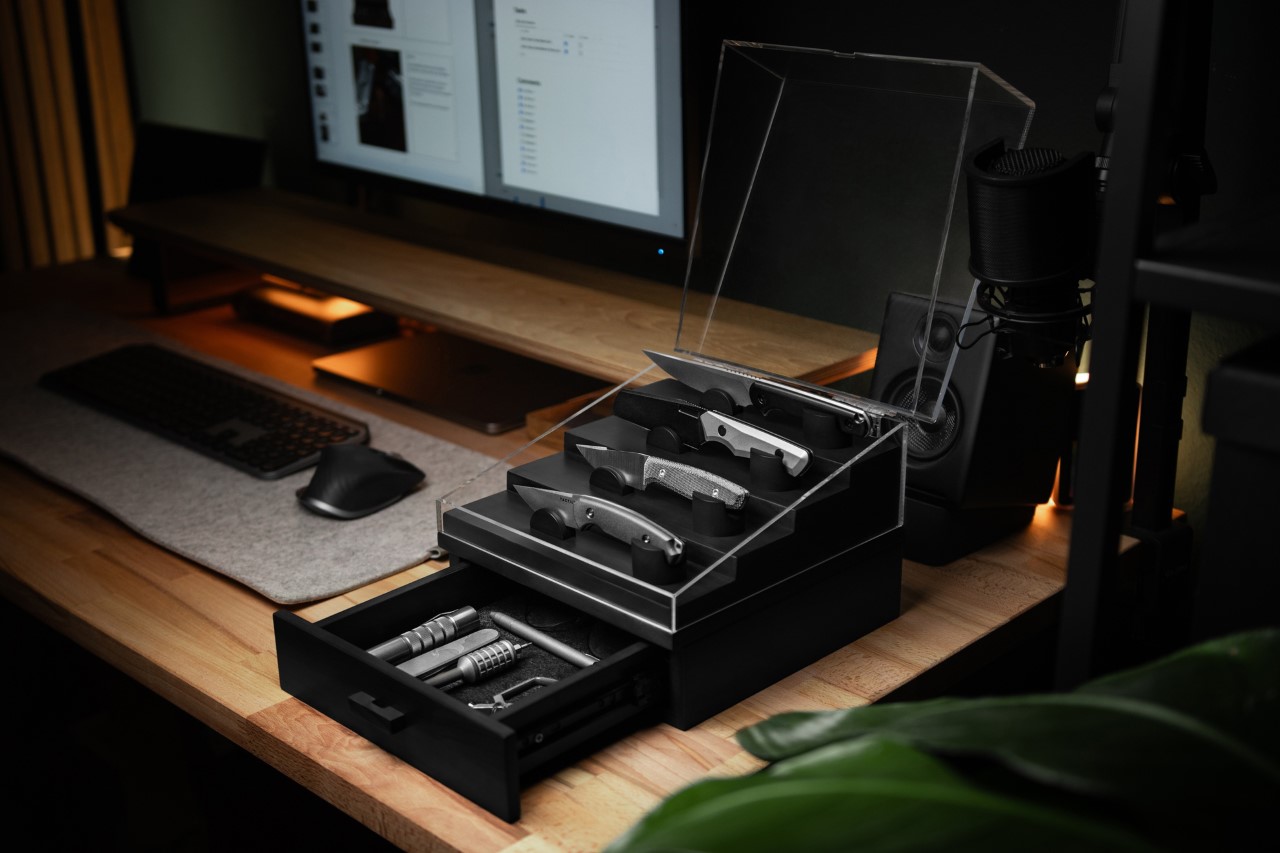
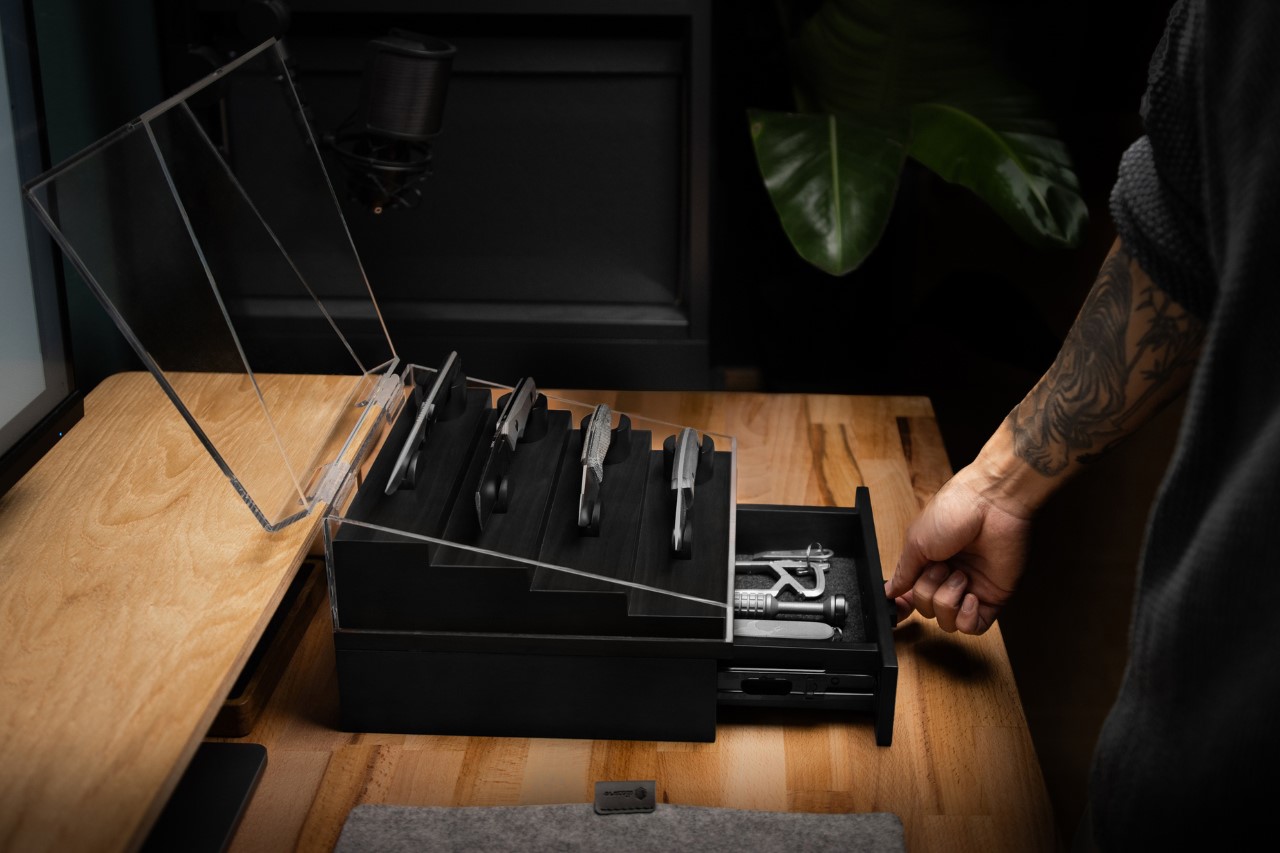
What should I look for in an EDC Display Case?
It overwhelmingly depends on the kind of EDC you’ve got, but luckily, there’s a vast variety of cases to choose from. Is your EDC watch-centric? Well, a nice watch-holder case should work. How about blades? Then Holme & Hadfield’s Blade Deck makes a nice pick too. It’s important to evaluate the kind of EDC you’d like to showcase (watches, blades, pens, coins, perhaps even spectacles) and then choose your case based around that. Make sure your case complements your gear as well as your decor… although you can never really go wrong with a nice hardwood and some plexiglass. For blades, try not to choose a leather or metal display case, because leather may end up getting cut, and metal might dull your blade. For watches, however, a leather or felt base helps prevent your watch from getting scuffed. If your case has a plexiglass (or glass) outer shell, we recommend keeping a nice cleaning spray handy. (Here’s the one they use to clean devices on display in Apple Stores)
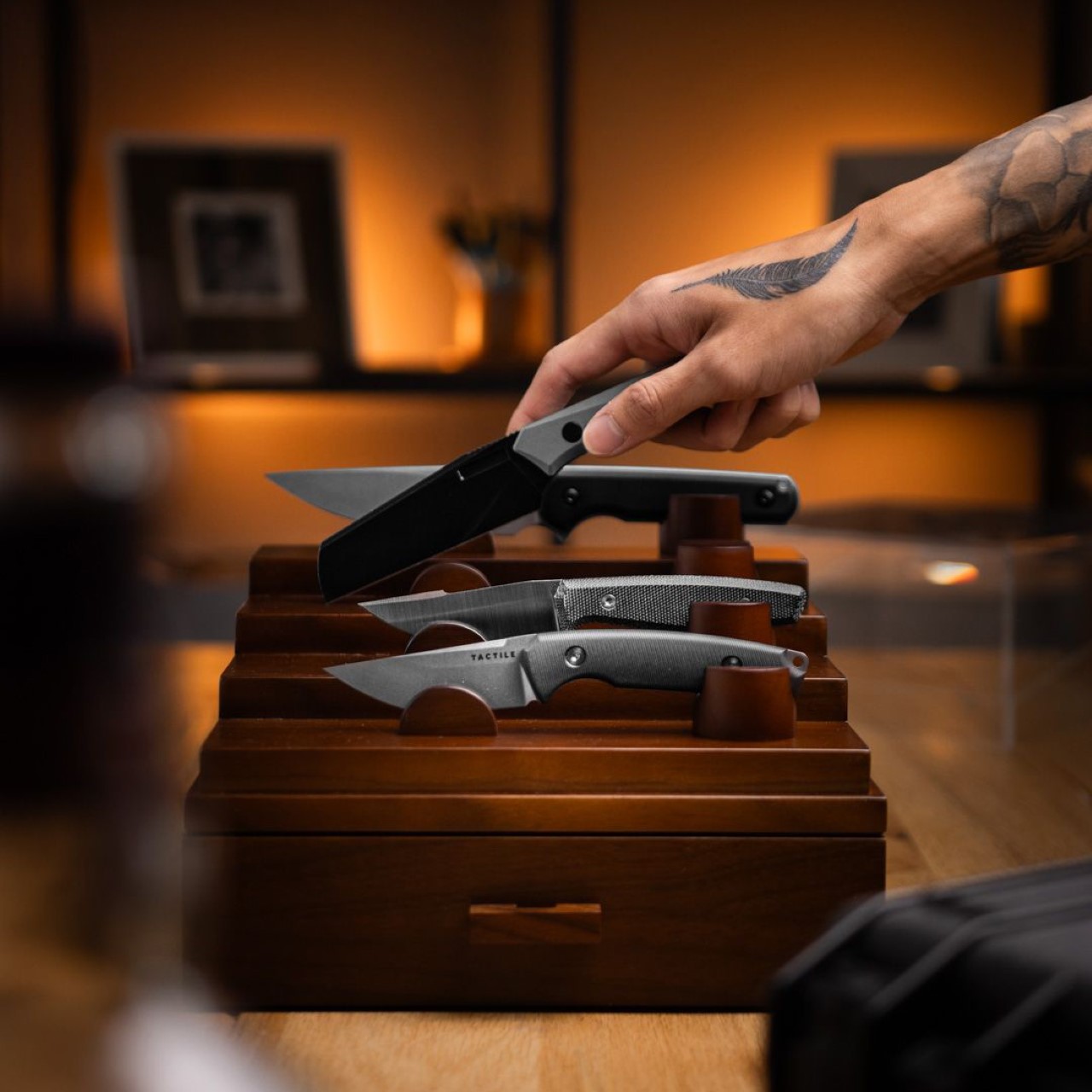
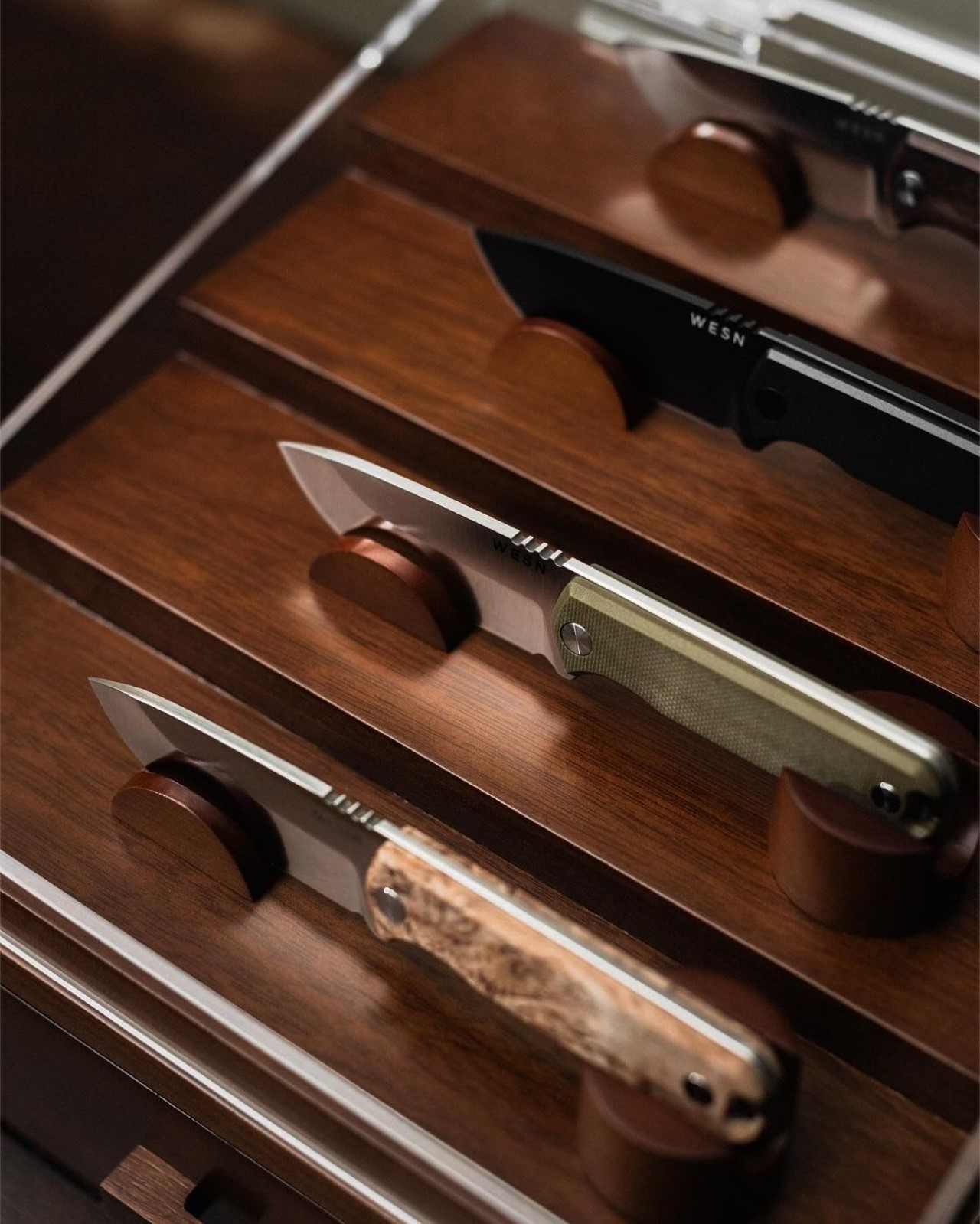
Don’t focus on just one gear category
Most people (not just EDC collectors) end up having multiple things they carry around with them, which is why it’s important to not fall into the trap of a single-use display case. Choose something with versatility, perhaps a few drawers and organizing areas for your other gear. A place for your ‘less favorite’ knives, maybe a few carabiners, some pens, loose change, etc. Put the fancy stuff on display, but keep the other stuff easily accessible for later. And make sure your drawers are lined with felt or microfiber, so your tools don’t end up scratching the wood… or worse, slipping around every time you open/close the drawer and scratching each other.
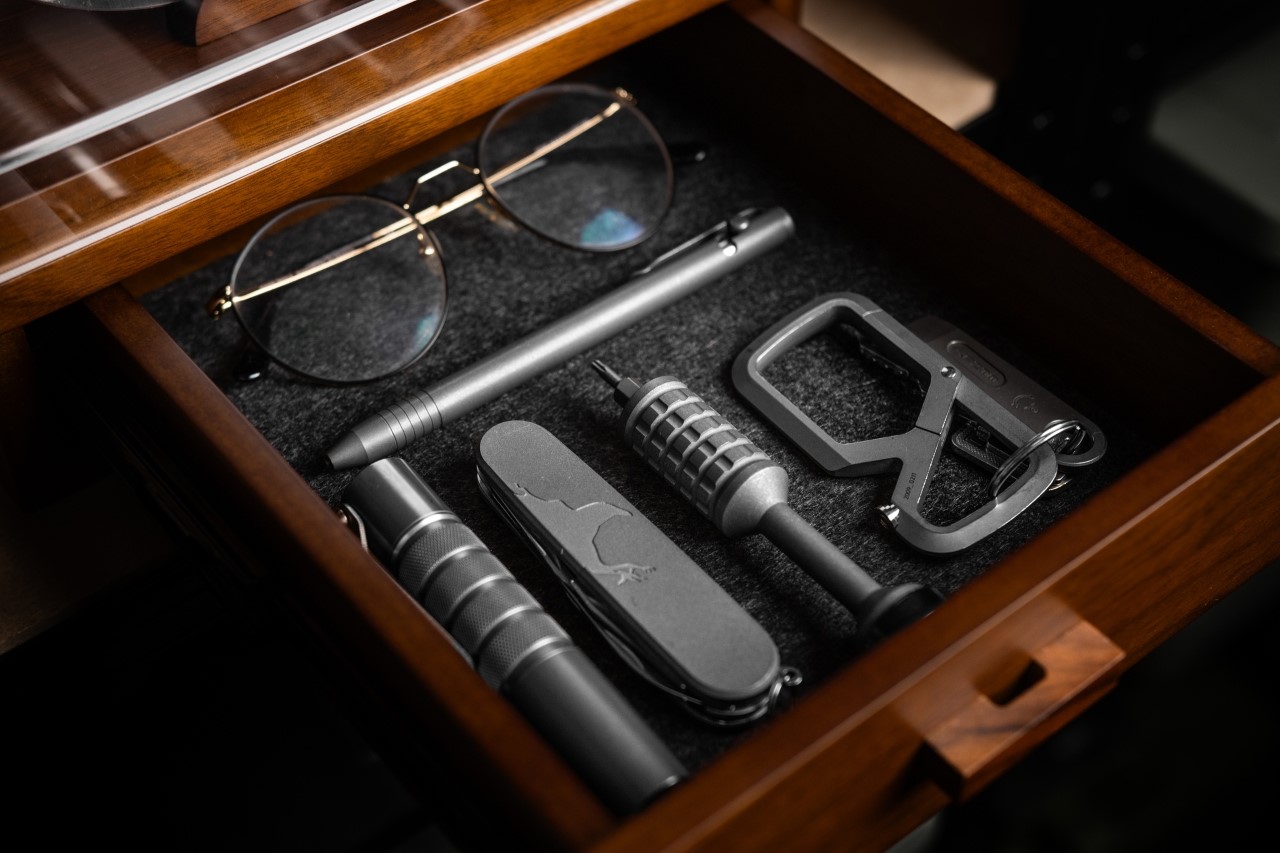
What budget should I have?
The quantity and the value of your EDC should determine how much you spend on a display case. Unless you’ve got high-flying collector’s edition gear worth tens of thousands collectively, your display case shouldn’t cost you more than $250-300. The larger your collection, the bigger your case should be, but whether you’ve got luxury watches or high-end knives, a good display case shouldn’t cost more than $500 even on the higher side. Moreover, with Valentine’s, Easter, and other holidays always around the corner, make sure you grab yours on sale!
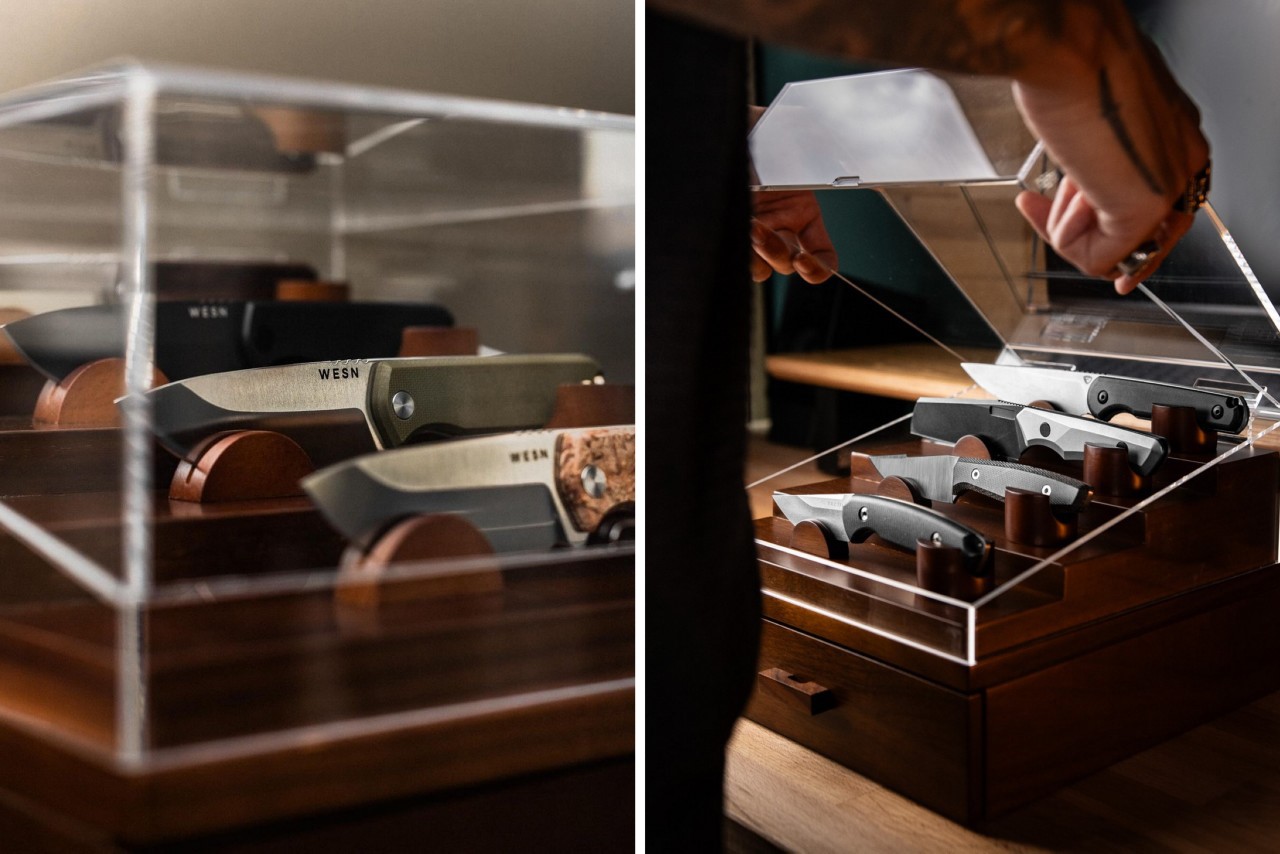
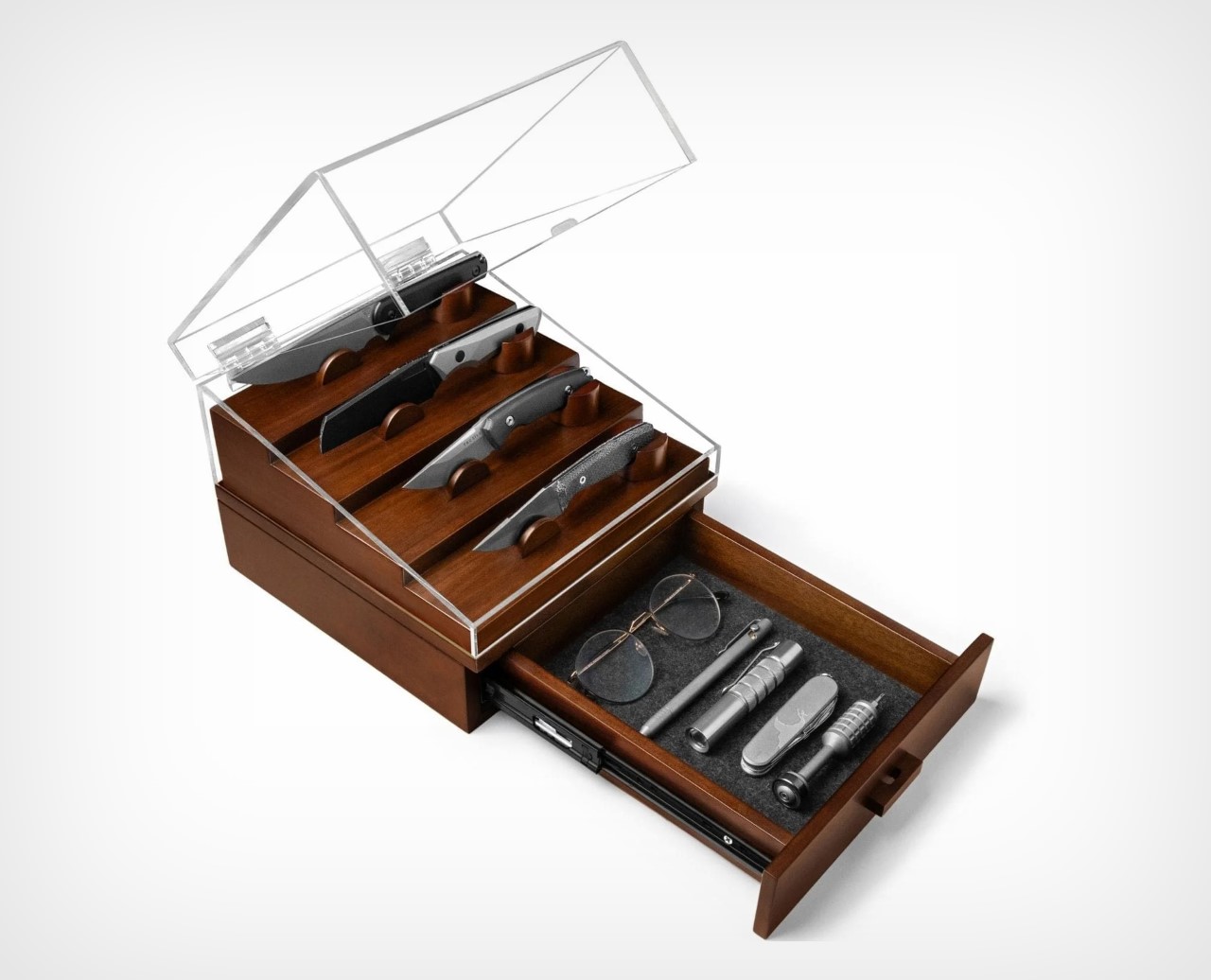
The post Why an ‘EDC Display Case’ should be on your Shopping List this Year first appeared on Yanko Design.